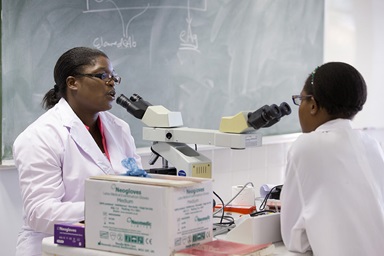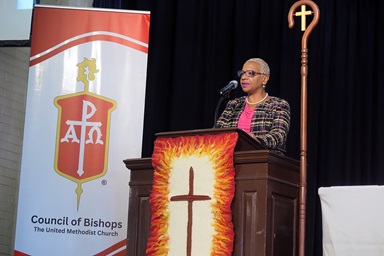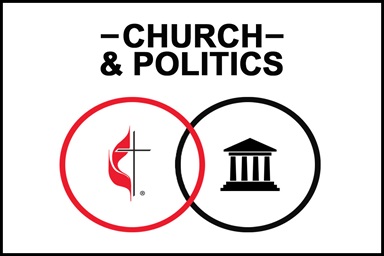A group of young volunteers plant crops at Catholic Charities' Christ Child North Center's garden site in Omaha, Neb. Photos courtesy of the Big Garden.
The Big Garden was born out of the Rev. Stephanie Ahlschwede’s dream to create a hands-on model of community gardening.
When Ahlschwede became executive director of United Methodist Ministries in Omaha in 2005, one of her first endeavors as director was to map out her dream and seek funding. She applied for and received a three-year grant through the United States Department of Agriculture's Community Food Project, and she was off and running.
The Big Garden’s goal was to create 12 community gardens in three years. Five years — and another three-year grant — later, it included 26 gardens in the metro-Omaha area and added a sister project, the Big Rural Garden.
Today, the Big Garden is a network of 70 community gardens in metro-Omaha and rural and semi-rural communities in Nebraska and Kansas. They expect to add 15 new garden sites in Nebraska this year — 10 rural and five urban — and soon will expand into Iowa.
Ahlschwede says the project is successful because the ministry is not just about growing food and meeting hunger needs, but also focuses on growing communities.
“The two are intertwined,” Ahlschwede said. “We have a saying that we are neighborhood based, not neighborhood placed. We’re about meeting people where they are and learning about their needs, not telling them what … they need.”
Nationally, the Big Garden is the largest group of community gardens and is the only program of its kind that not only has both rural and urban garden sites, but also operates in more than one state.
Self-sufficiency is goal
Something else that makes the Big Garden unique is its partnerships with neighborhood-based congregations, schools and non-profits. Garden sites are on land owned by a community agency; Big Garden staff collaborates with sites to assist with startup costs and ongoing program support and to offer garden and nutrition classes for children.
Big Garden director Nathan Morgan explained how working on a three-year model allows each garden site to become self-sustaining.
“The first year, we provide the resources and tools to prepare and plant the garden,” Morgan said. “In the second year, we focus on leadership development, encouraging community outreach and becoming self-sufficient.
Iliana Jiménez and Junior Pérez examine radishes, one of the first crops to be harvested at the Hastings Grace United Methodist Church commmunity garden in Hastings, Neb.
“During the third year, we really focus on helping the site coordinators develop a business plan and to think about the future. Each site designs their own garden and decides how it will operate and how the crops will be used.”
Ahlschwede pointed out that this system also makes the Big Garden cost-effective. The ministry serves as a hub of information and resources, but the gardens ultimately belong to the churches and communities, and they take ownership and become self-sufficient.
Many of the gardens, both rural and urban, provide an intercultural setting and experience. A group of Karen refugees from Southeast Asia runs one garden in Omaha. A garden in Hastings, Neb., which has a population of 24,000, has a large Latino presence.
Sandy Sypherd, a site director for the Hastings garden, shared the garden’s impact on the church and in the community.
‘An incredible first seven years’
“Hastings Grace United Methodist Church has a Latino congregation,” she said. “One of our objectives was to bring people together from both of our congregations and to help them learn about healthy lifestyles. It’s been incredible to see everyone working and learning together in the garden. Also, the city of Hastings has asked our garden committee to manage their community garden downtown, and we hope to partner with an elementary school that has a fairly large Latino population.”
In 2012, more than 1,400 volunteers worked at Big Garden sites. United Methodist Ministries is also a Volunteers in Mission site; last year, nearly 500 VIM workers, many of them youth, worked in the Big Garden and learned about food security and hunger issues.
While Ahlschwede and Morgan are more than pleased with the growth of the Big Garden, they continue to set future goals, including collecting data on behavior change because of nutrition or changes in eating behavior that accompanies access to fresh garden fare. They also provide theological reflection materials for people on the subjects of food and hunger.
“We've had an incredible first seven years of growing both food and communities, “Ahlschwede said. “As we grow, we will continue to be faithful to our founding intention of increasing access to nutritious food through community gardening, while deepening our leadership training activities and increasing our geographic range. The Big Garden is about community, graciousness, good stewardship and working together on creative solutions in our communities, with our neighbors.”
*Johnson is communications coordinator for the Nebraska Annual (regional) Conference.
News media contact: Barbara Dunlap-Berg, Nashville, Tenn., (615) 742-5470 or [email protected]
Like what you're reading? Support the ministry of UM News! Your support ensures the latest denominational news, dynamic stories and informative articles will continue to connect our global community. Make a tax-deductible donation at ResourceUMC.org/GiveUMCom.



